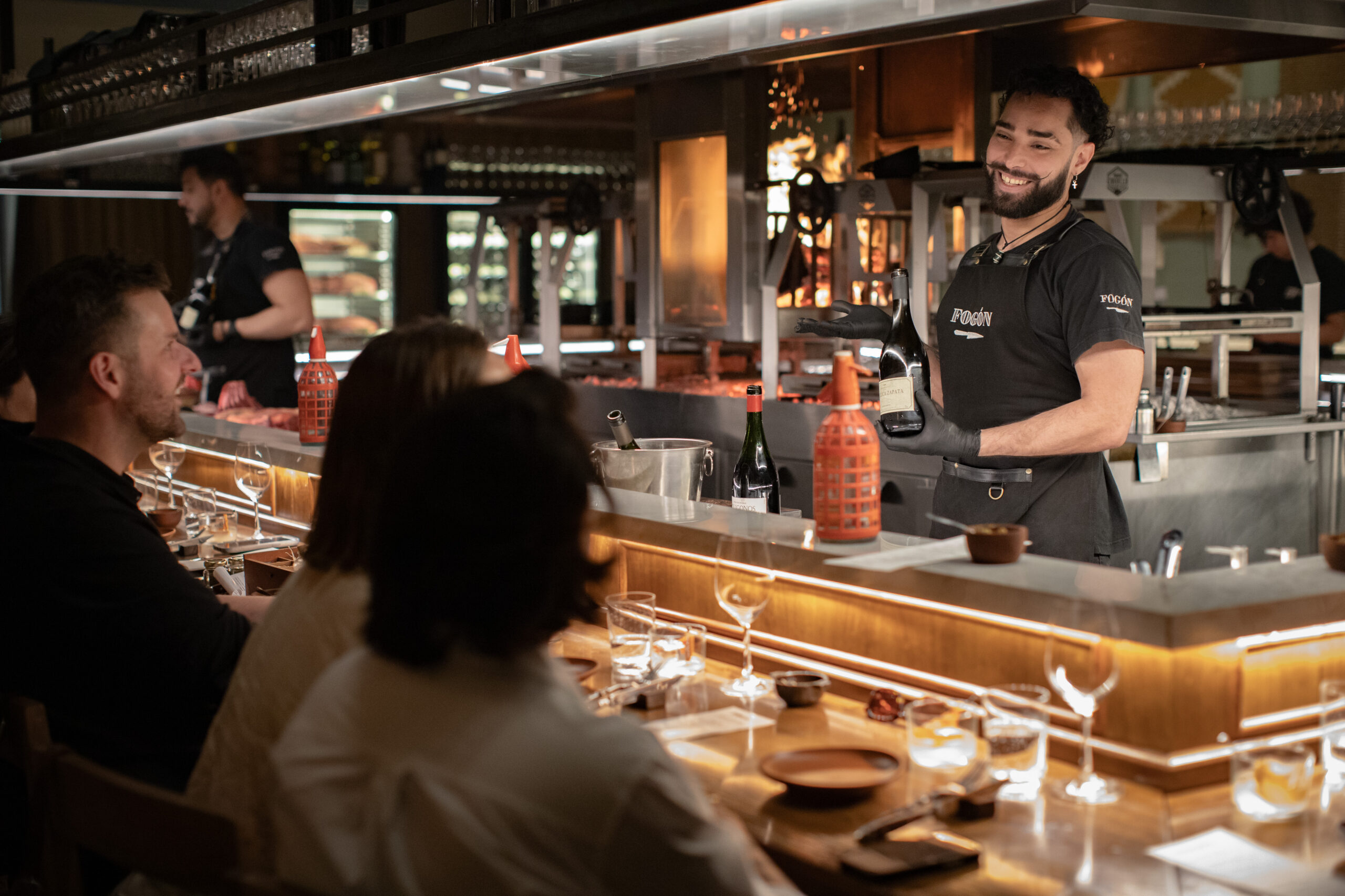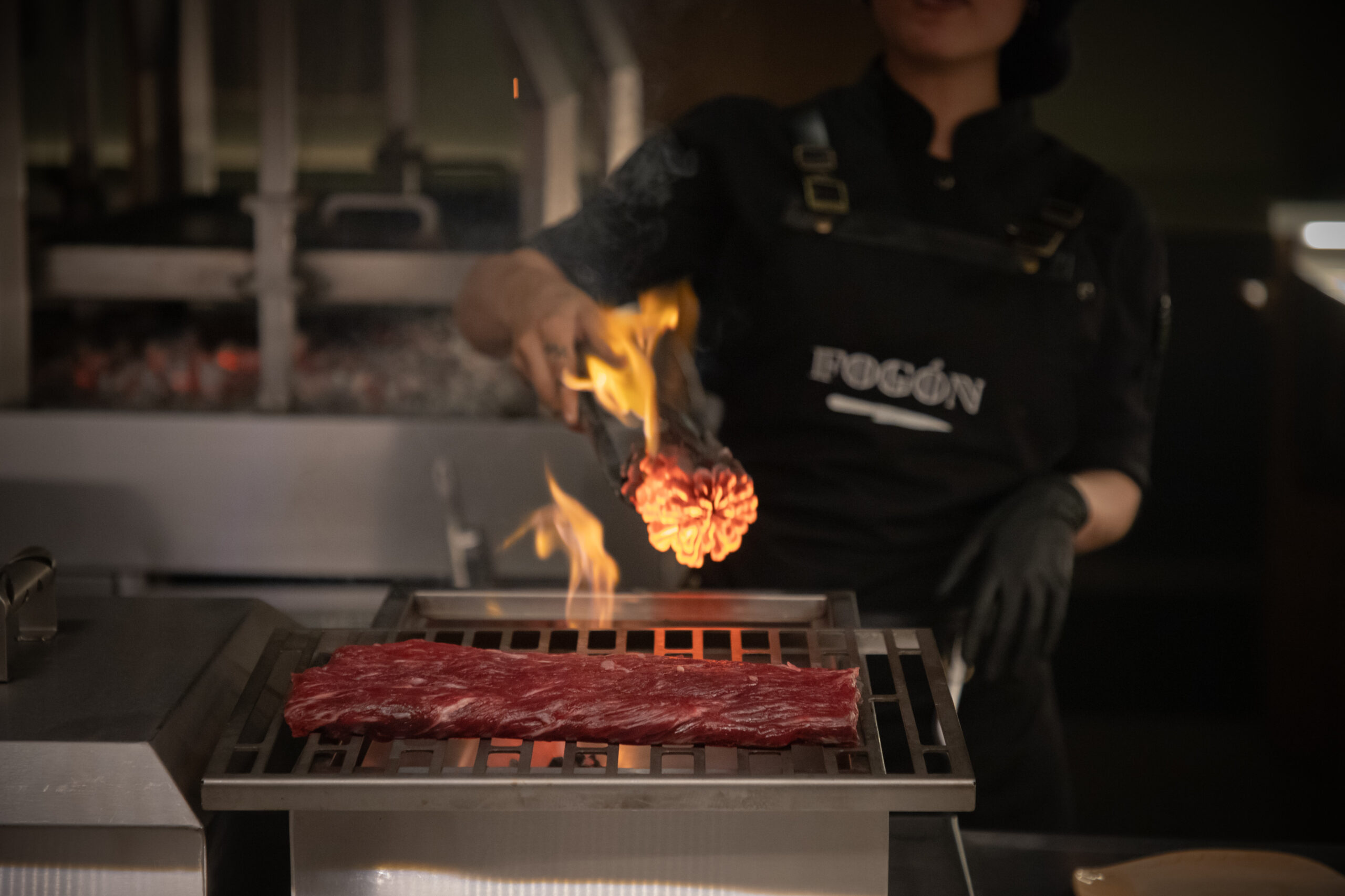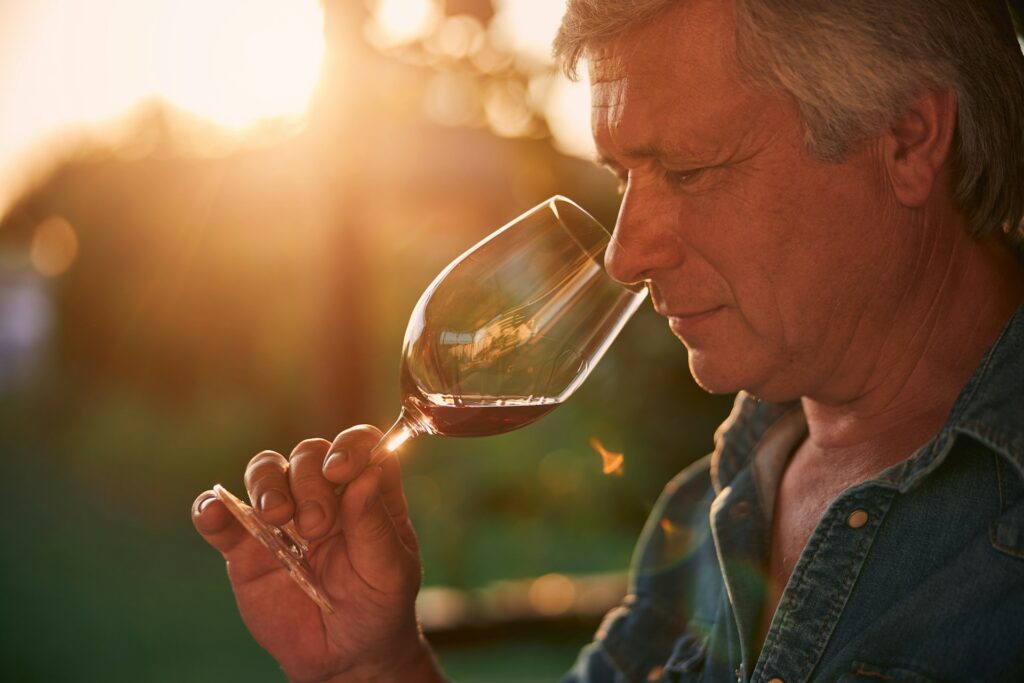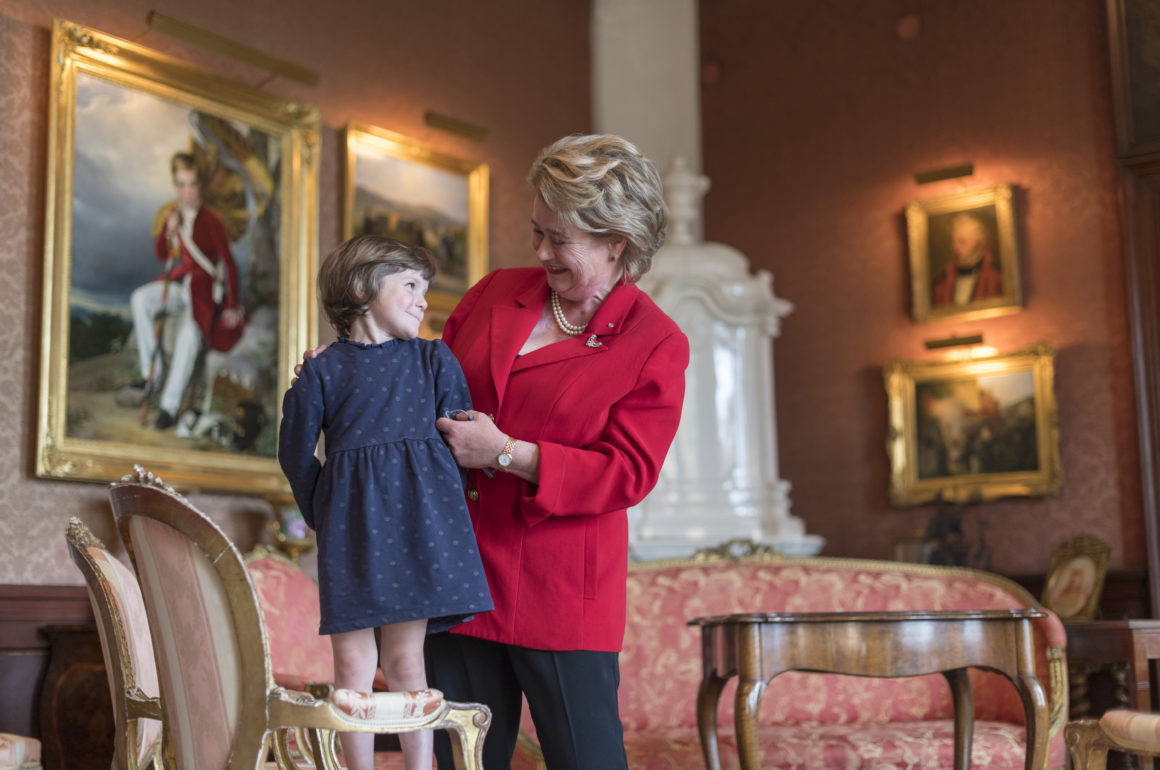Fogón Asado is no ordinary Buenos Aires restaurant. This petite parrilla (the name for this city’s expert steakhouses), with its exposed brick and leaping flames, is more like an immersive theatre experience melded with a supper club, all designed to introduce guests to the Argentinian art of asado. In an exclusive experience designed by the owners, Argentinian Alex Pels and his Danish wife Dani Jenster, the intimate space holds a maximum of 30 diners, who are given a ringside seat to this traditional, meat-focused feast.
Luxury Gold clients, visiting the Buenos Aires restaurant on the Argentinian leg of our Grand South America tour, are among the lucky few in attendance. Sitting at the polished countertop, you’ll watch the expert chefs smoke, sizzle and slice different cuts of meat, seasonal vegetables and the local provoleta cheese ‒ all on an elaborate, custom-made barbecue that executive chef José Gilberto Garcia calls “the Ferrari” of grills. We caught up with José to find out about this very particular style of South American cuisine.

A chef at Fogón Asado shows diners the way of the asado (Fogón Asado)
We think you’ll also like: Award-Winning Argentine Wines You Must Try on Your Next Trip
Your Buenos Aires restaurant describes itself as “asado for a fine dining audience”. Can you tell us a bit more about this?
“Certainly. Asado describes the grilling technique – over a wood fire and its embers, but for Argentinians it’s also a kind of ritual, a traditional experience. It’s a very special moment to share with friends or with family. We usually gather at weekends for an asado, where we grill different cuts of meat for many hours. Everyone stands around the grill, enjoying wine and tasting the different cuts. At Fogón, we’ve tried to recreate that feeling for a fine dining audience. We like to incorporate innovative techniques and presentations to elevate the experience. Our tasting menu is designed based on the Argentine asado, but has a modern and unique approach.”
What’s the origin of the cooking style, and how do you engage with that?
“The history of asado in Argentina dates back to the 19th century, evolving from the cooking practices of gauchos – Argentinian cowboys. As they roamed the vast pampas herding cattle, they developed simple, yet flavorful ways to cook meat over open fires. This method became ingrained in Argentine culture, blending indigenous techniques with Spanish influences. The gauchos had their tools, like the gaucho knife, the facón, which are very sharp. They used it for fighting, they used it for cooking and that’s really all they needed. We really wanted to include these tools in our dining experience. So a selection of these knives are presented to diners during the meal in a handmade wooden box, and each person can kind of choose their weapon. That’s our way of including a little bit of the culture and the history.”

Meat is grilled at Buenos Aires restaurant Fogón Asado (Fogón Asado)
Explore More: Inside Vancouver’s Only Indigenous Restaurant, Salmon n’ Bannock
Can you tell me about the technical aspects of the fire cooking process?
“At Fogón we use two different types of wood that are typical here in Argentina; there’s one in particular called quebracho, which is one of the hardest woods in the world. The Spanish name for it actually comes from the phrase “to break the axe”. The white kind, quebracho blanco, is what we use to start the fire on our parrilla (grill) for the bigger cuts of meat to hang over; then we add the red kind (rojo), and once there are glowing embers from that wood, we cook smaller items like the rib eye or the bife el chorizo. It really adds a special flavour to the meat.”
How do you ensure the quality of ingredients?
“Quality is key at Fogón. We meticulously source our ingredients, prioritizing local, organic, and sustainably raised meats and produce. Our partnerships with local farmers and suppliers ensure that we receive the freshest and highest quality ingredients available. Each piece of meat is carefully selected for its marbling, age, and origin, ensuring that only the best makes it to our grill. This commitment to quality extends to every aspect of our dishes, from the vegetables and herbs to the specialty condiments. Unlike other restaurants, we only do one sitting per night, ensuring that each product is treated with respect and care.”
What are some of your favourite dishes on the menu?
“One of mine is the rib-eye cap, what we call the ceja (eyebrow), which we smoke with pine cones for an hour or so, something like that. Then we chargrill it over a strong fire for six or seven minutes more, until it’s rare to medium-rare. The flavour is very smoky and we serve it with a creamy cauliflower puree and corn cooked with a local technique called rescoldo, where we cook the vegetables over the fire. It’s smoky, salty, creamy, and even a little acidic because we add a little rice-vinegar to the cauliflower. It’s like a hug for your tongue.
“Another very typical street food here is choripan, which is usually local chorizo or morcilla sausage served in a baguette. This is something we eat at concerts, at the market or football games. But because we’re taking asado to a fine-dining experience, we reimagined the choripan for our menu. We put the two types of sausage on open-face, grilled breads, with a delicious apple and quince chutney on top, and flame-grilled pepper. In Spanish we call the combination “un matrimonio” (the marriage) because it goes so well together.”

Dishes at Fogón Asado, Buenos Aires (Fogón Asado)
Save for later: Indulge Your Inner Gourmet With These Luxury Food Experiences
What else can guests expect from the experience?
“Guests are greeted with a cocktail, a Negroni but crafted from Argentine ingredients, like mate (a caffeinated herbal drink), Patagonian elderflower, vermouth and Viognier wine. From there it’s a three-hour fireside dining experience; you sit at the bar and all the preparations are done in front of you, right on the fire. I’ll explain each cut of meat, and show you them on a big wooden board before we begin. It’s a very interactive experience, inspired by the fact that Argentinians often gather around the asado when cooking at home.
We also have wine pairings of regional and national wines; our owners don’t believe in set glasses of wine, so we are very generous with refills! You’ll try every classic asado dish that you would usually try, but in a fine-dining presentation: they’re smaller, lighter plates and a bit more creative. It’s a real performance: our team loves to work in front of people and answer questions.”
Experience the art of Argentinian asado on our Grand South America journey
Fogon Asado has two Buenos Aires restaurants ‒ one in Palermo Soho and one in Palermo Viejo. Tasting menus from $60 for lunch and $80 for dinner; wine pairings available (fogonasado.com)












